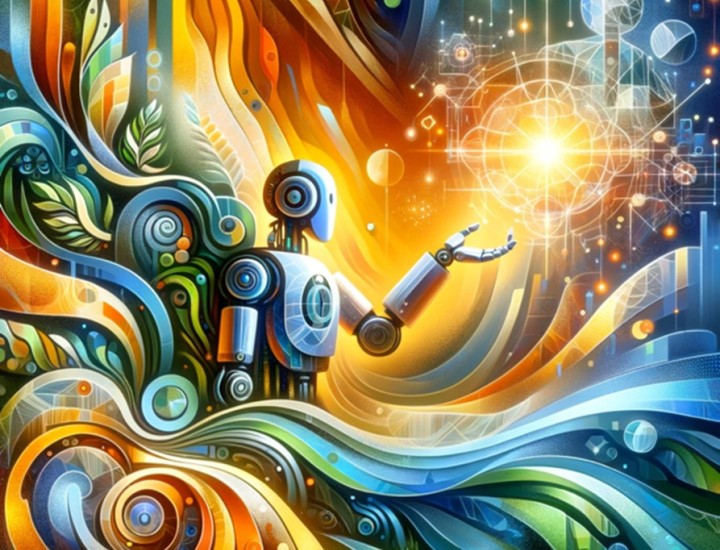AI and Automation: What's the Difference?

Every day organizations discuss how to add generative AI into their work. They want to improve operations or improve their ability to serve their customers.
Automation quickly becomes a major part of that conversation as well – sometimes to the point that AI and automation become indistinguishable topics from each other.
That leads us to the question – how do artificial intelligence and automation relate to each other? How should organizations consider the two technologies within their own work?
Squares and Rectangles
If you recall back to your math education – sometime around upper elementary school – you might recall learning about the relationship between squares and rectangles:
“All squares are rectangles, but not all rectangles are squares."
This relationship is a useful analogy for the relationship between generative AI and automation:
"All AI is automation, but not all automation is AI."
While this analogy isn't perfect, it serves as a useful starting point for understanding the nuances between AI and automation. Let's delve deeper into this comparison and explore how AI fits into the broader landscape of automation, particularly for nonprofit organizations.
To understand the analogy, let's first revisit the geometric relationship between squares and rectangles. A square is a specific type of rectangle where all sides are equal in length. In contrast, a rectangle is a broader category that includes any quadrilateral with four right angles, regardless of side length. Thus, while every square is a rectangle, not every rectangle is a square.
Applying this analogy to AI and automation, we can say that AI is a specialized form of automation. Automation encompasses a wide range of technologies and processes designed to perform tasks without human intervention. These tasks can be simple, repetitive actions or complex sequences requiring decision-making. AI, on the other hand, is a subset of automation that involves machines mimicking human intelligence to perform tasks that typically require cognitive abilities, such as learning, reasoning, and problem-solving.
AI: A Key Tool in Nonprofit Automation
Traditionally, tasks associated with automation are “deterministic” or “rule-based”. The automation procedure follows a predefined path to a predictable outcome. This is extremely useful, but can be brittle. Whoever sets up the automation must account for all of the logic in the process and their associated edge cases.
In contrast, generative AI unlocks “nondeterministic” automation. Think of it as a tool that helps fill in gaps in automation around ambiguous, but repeatable tasks. For example, AI agents can analyze conversations to classify them, can extract context from text, or automate interactions through chatbots.
When tasks are less ambiguous and have clearly defined goals, other automation tools may be more effective. For instance, robotic process automation (RPA) excels at automating repetitive, rule-based tasks such as data entry, donor management, and report generation. These tasks don't require the cognitive capabilities of AI but benefit greatly from the efficiency and accuracy of automation.
The Role of AI in Modern Nonprofit Automation
AI's ability to handle ambiguity and learn from experience makes it particularly valuable in scenarios where traditional automation falls short.
At Tech Impact, we ran into this challenge with our Computer Use Policy Builder product. Computer use policies are an important component of a nonprofit organization’s IT landscape. Tech Impact wants to ensure that all nonprofit organizations have access to a high-quality computer use policy in order to protect themselves. While most computer use policies share common characteristics, there are an infinite number of ways that they can change. It was impossible to utilize traditional, deterministic automation methods for the Computer Use Policy Builder. However, generative AI allowed for nondeterministic, generative AI driven methods to be utilized instead. You can read more about this process here.
PS - Need a Computer Use Policy for your Nonprofit? Build one here for free.
If you’re considering how to utilize generative AI for automation in your organization, you should think about tasks that are repeatable, but include ambiguity. Some examples that you might consider include:
- Fundraising and Donor Management: AI-powered tools can analyze donor data to identify potential major donors, personalize communication, and predict donation patterns. This helps nonprofits build stronger relationships and increase fundraising efficiency.
- Program Evaluation: Machine learning algorithms can analyze program data to assess impact, identify areas for improvement, and make recommendations for future initiatives. This enables nonprofits to make data-driven decisions and enhance their programs.
- Operational Efficiency: AI-driven automation can streamline administrative tasks, such as scheduling, data entry, and financial management, freeing up staff to focus on mission-critical activities.
Challenges and Considerations
While AI offers significant advantages, it also presents challenges. Implementing AI requires substantial investment in technology, expertise, and data. Nonprofits must also address ethical considerations, such as bias in AI algorithms and the impact on jobs.
Moreover, the distinction between AI and automation can sometimes blur, leading to confusion. It's essential to recognize that AI is just one component of a broader automation strategy. By understanding the strengths and limitations of different automation tools, nonprofits can make informed decisions about which technologies to deploy for specific tasks.
Conclusion
"All AI is automation, but not all automation is AI" provides a helpful framework for the relationship between these two concepts. AI is a specialized form of automation that excels at handling ambiguous, cognitive tasks, while other automation tools are better suited for well-defined, repetitive tasks. By leveraging the strengths of both AI and traditional automation, nonprofits can optimize their operations, enhance efficiency, and drive social impact.
As we continue to explore the potential of AI and automation, it's crucial for nonprofits to stay informed about the latest developments and best practices. By doing so, they can harness the power of these technologies to create a more productive and dynamic future for their communities.



